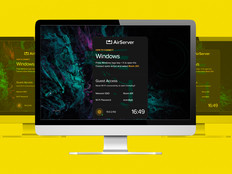High Tech Cuts Downtime in Exhibits
Most digital displays are driven from a server room via a PC or multiheaded, synced media player, which is more high-end than anything the museum used previously. Interactive content and displays can be more easily hot-swapped in and out, so many double as presentation spaces.
Most important, a centralized server means visitors will experience less exhibit downtime.
“We don’t have to have staff going from gallery to gallery, constantly checking on things to make sure they’re working,” Van Ness says. “We can monitor everything remotely.”
The museum’s west end alone features a mix of about 50 digital, audiovisual and mechanical interactives and presentations designed by curators, educators and interactive specialists.
LEARN ABOUT: How integrated solutions allow agencies to quickly add technology.
Improving the User Experience
A more “user-friendly” gallery design promotes active learning and makes it easier for visitors to grasp difficult concepts like wing warping, says Museum Educator Beth Wilson.
“I think today a lot of visitors are used to computers and watching things on YouTube and getting these really quick, engaging digital experiences,” Wilson says. “We’ve incorporated that into the galleries.”
Traditional exhibits like the Wright Flyer and Apollo 11 command module are represented, as well as new additions including Neal Loving’s WR-3 and Jackie Cochran’s T-38 Talon, brought out of storage.
The museum added high-resolution displays with medical- and military-grade display glass to show new footage from NASA.
The museum is undertaking a “thoughtful” process to design interactives that will adhere to its updated technical specifications while remaining open to emerging technologies, Van Ness says.
CHECK OUT THIS VIDEO: Museum goes high-tech for next-generation exhibits.
The museum will also consider making similar changes to its Steven F. Udvar-Hazy Center in Chantilly, Va., which mostly features “large artifacts with a label,” says Jeremy Kinney, associate director of research and curatorial affairs.
“We want to meet visitors where they are,” Kinney says.











